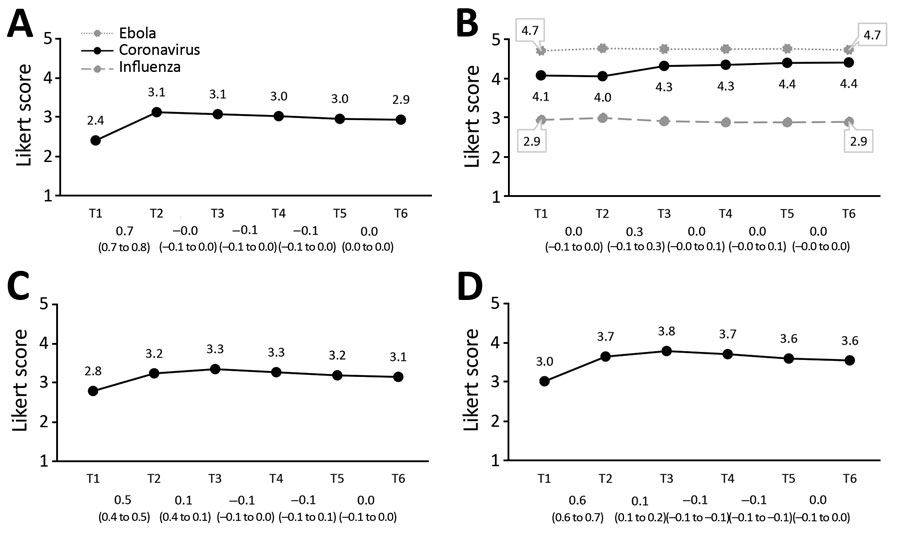Volume 27, Number 4—April 2021
Research
Dynamic Public Perceptions of the Coronavirus Disease Crisis, the Netherlands, 2020
Figure 2

Figure 2. Perceptions of COVID-19 in the Netherlands. A) Perceived probability of COVID-19; B) perceived severity of influenza, coronavirus disease, Ebola; C) concerns about own heath; D) concerns about health of family members. Mean values per survey are shown above the graph line. Note that the 95% CIs around the mean estimates could not be shown on the figure because the 95% CIs are very close to the mean estimates (upper values of <mean + 0.1 and lower values of >mean – 0.1). All 95% CIs around the mean estimates are shown in Appendix Table 2. Changes between subsequent surveys, based on generalized estimating equation analyses, are shown below the baselines as β and 95% CIs. The coefficients and 95% CIs shown in Figure 3, panel B, are generalized estimating equation results with perceived severity of coronavirus disease as the dependent variable. COVID-19, coronavirus disease.
1These authors contributed equally to this article.